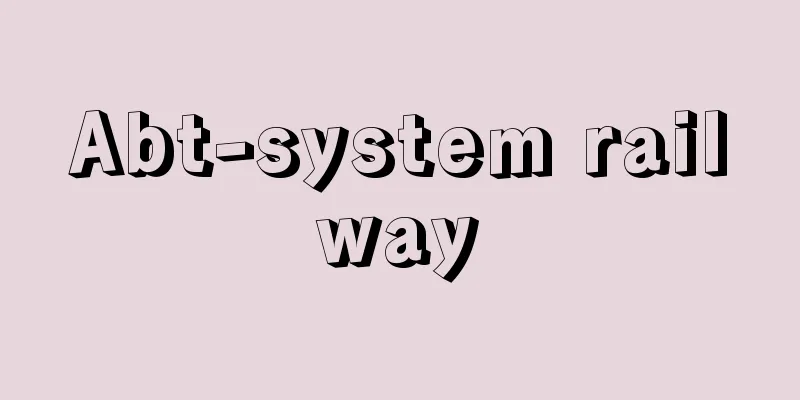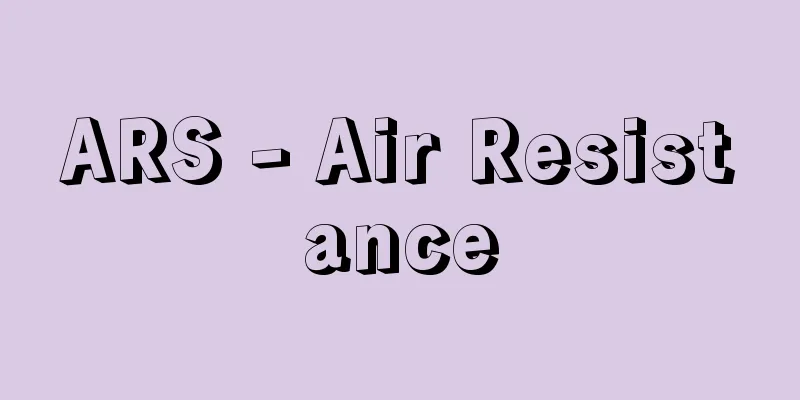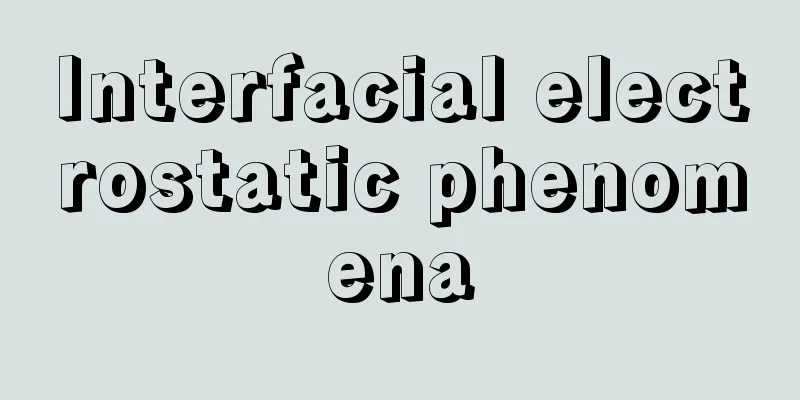Appeal - Appeal

|
In civil litigation, a plaintiff (the person suing) files a lawsuit against a defendant (the person being sued) to request a court of first instance to hear and adjudicate on the assertion of the existence or non-existence of a certain right or legal relationship (litigation claim). The same is true for administrative litigation, but in criminal litigation, it is equivalent to a public prosecution (the initiation of a public prosecution is an indictment). As seen in the legal proverb "No suit, no trial," in civil litigation, if there is no suit from the plaintiff, the court cannot begin to hear the case, and in principle, it can only hear and rule on matters within the scope of the plaintiff's claims (Civil Procedure Act, Article 246). The entire process by the court from the filing of the suit to obtaining a judgment is a lawsuit. When a suit is filed, the court is obligated by law to respond to it in some way (trial). However, it is not necessary to rule on all suits to grant or dismiss the plaintiff's claim (judgment on the merits). In order to rule on the merits, the suit must be lawful and meet certain requirements (suit requirements). If these requirements are not met, a judgment to dismiss the suit (suit judgment) will be made. This is commonly called a "judgment at the door." Suits are divided into three types according to the nature of the plaintiff's litigation claim: suits for performance, suits for confirmation, and suits for formation (suit for creation). [Takeyoshi Uchida and Tetsuo Kato] Appeal for benefitsThis is a lawsuit that asserts the existence of a specific right to claim benefits. In this case, a benefit refers to a request for the defendant to pay money, hand over an item, vacate the house, or to refrain from doing something. This lawsuit has been recognized since ancient times, and is still the most commonly used today. If the plaintiff wins a lawsuit for benefits, if the defendant does not perform as per the judgment, the lawsuit has the effect (executory power) of realizing the right to claim benefits through compulsory execution. The entire procedure of this trial is called a lawsuit for benefits. [Takeyoshi Uchida and Tetsuo Kato] Appeal for confirmationIt is a suit asserting the existence or non-existence of a specific right or legal relationship (an exception is a suit for confirmation of the authenticity of a document under Article 134 of the Civil Procedure Act). For example, a case may be made in which the plaintiff asserts that "this building is owned by the plaintiff" or that "the plaintiff does not owe the defendant tens of thousands of yen." Once such legal relationships are confirmed by a judgment, the parties are no longer permitted to argue, and the dispute is resolved. This entire trial procedure is called a declaratory judgment suit. [Takeyoshi Uchida and Tetsuo Kato] Appeal for formation (foundation)It is a lawsuit that asserts a change (creation, modification, extinction) in legal relationships based on certain formation requirements. For example, this is the case when a judgment is sought for divorce (Article 770 of the Civil Code) or the annulment of a general meeting resolution of a corporation (Article 831 of the Companies Act). Since there are many interested parties in personal and association relationships, the change must occur uniformly not only between the parties involved but also in relationships with third parties. For this reason, it is decided that the change will only take effect through a judgment. Therefore, a lawsuit for formation can only be filed if it is permitted by the provisions of law. This entire judicial procedure is called a formation lawsuit. [Takeyoshi Uchida and Tetsuo Kato] Filing of lawsuitIn principle, a lawsuit is filed by submitting a complaint to the court. The complaint must contain the required items (Article 133 of the Civil Procedure Act, Article 53 of the Civil Procedure Rules), and a stamp must be affixed to it in order to pay a fee according to the amount of the lawsuit. Oral lawsuits can also be filed in summary courts under the law. [Takeyoshi Uchida and Tetsuo Kato] Withdrawal of the lawsuitIf the plaintiff withdraws the lawsuit of his/her own volition, the proceedings will end without a final judgment being reached. In other words, withdrawal of a lawsuit is the plaintiff's expression of intent to the court that he/she will no longer seek a hearing or judgment after the lawsuit has been filed. However, once the defendant has begun to prepare to respond, the defendant will have an interest in seeking a judgment dismissing the plaintiff's claim, and this interest must be protected. For this reason, the plaintiff must have the defendant's consent to withdraw the lawsuit (Civil Procedure Act, Article 261). When a lawsuit is withdrawn, the lawsuit is considered to have never been pending in court for that part in the first place. Therefore, if the lawsuit is withdrawn in the appeal court, the original judgment will also lose its effect. Since the withdrawal of a lawsuit means that there was no lawsuit, it is permissible to file a lawsuit on the same case again. However, a person who withdraws a lawsuit after a final judgment has been made on the merits cannot file the same lawsuit again in order to avoid unnecessary repetition of hearings and inconsistencies in judgments on the same case (Civil Procedure Act, Article 262, Paragraph 2). [Takeyoshi Uchida and Tetsuo Kato] Consolidation of claimsWhen a lawsuit is conducted in a single proceeding, the basic form of the lawsuit is that there is only one plaintiff and one defendant, but the procedural law also allows cases where there are several claims or where one or both parties are multiple. This is because it is convenient and reduces the burden on the parties, and if the claims are related, it can avoid overlapping trials and inconsistencies and conflicts in trials. However, if this is allowed without limit, it can make the trials complicated and delay the lawsuit, so reasonable conditions for consolidation are set for each case. When one plaintiff makes several claims against one defendant from the beginning with one lawsuit, it is called "objective consolidation of lawsuits" (Civil Procedure Law, Article 136). There are various forms, including the consolidation of a claim for payment of the purchase price and a claim for the return of a loan. In contrast, a lawsuit form in which several people are involved in a single lawsuit as plaintiffs or defendants is called a "joint lawsuit" or "subjective consolidation of lawsuits" (Civil Procedure Law, Article 38). Joint lawsuits are classified into "ordinary joint lawsuits" and "necessary joint lawsuits", the latter of which are further classified into "inherently necessary joint lawsuits" and "similarly necessary joint lawsuits" from the perspective of whether or not judgments are allowed to be made separately for each joint plaintiff (party on the same side) (the necessity of joint determination) and whether or not it is necessary for several people to sue or be sued as a single unit in order to resolve the claim (the necessity of joint litigation). [Takeyoshi Uchida and Tetsuo Kato] [References] | | | | Public | | | | | |Source: Shogakukan Encyclopedia Nipponica About Encyclopedia Nipponica Information | Legend |
|
民事訴訟において、原告(訴える者)が被告(訴えられる者)を相手とし、第一審の裁判所に対して、一定の権利または法律関係の存否の主張(訴訟上の請求)について審理および判決を求めるための行為をいう。行政訴訟も同様であるが、刑事訴訟では公訴にあたる(公訴の提起が起訴である)。 「訴えなければ裁判なし」という法諺(ほうげん)にもみられるように、民事訴訟では原告の訴えがなければ、裁判所はその事件について審理を始めることはできないし、また原告が申し立てた範囲内の事項についてだけしか審理・判決できないのが原則である(民事訴訟法246条)。訴えの提起から判決を得るまでの裁判所による手続の全体が訴訟である。訴えが提起されると、裁判所はこれに対しなんらかの応答(裁判)をしなければならない制度上の義務を負うことになる。しかし、すべての訴えに対して原告の請求を認容したり、あるいは棄却する判決(本案判決)をしなければならないわけではない。本案判決をするためには、その前提として一定の要件(訴訟要件)が備わっている適法な訴えでなければならない。この要件が欠けている場合には、訴え却下の判決(訴訟判決)がなされてしまう。これを俗に「門前払いの判決」という。訴えは、原告の訴訟上の請求の態様に応じて、給付の訴え、確認の訴え、形成の訴え(創設の訴え)の三つに分けられる。 [内田武吉・加藤哲夫] 給付の訴え特定の給付請求権の存在を主張する訴えである。ここで給付とは、被告に金銭の支払い、物の引渡し、家屋の明渡しなどの作為や、何々するなという不作為を求めることである。古くから認められている訴えで、今日でももっとも多く利用されている。給付の訴えにおいて原告が勝訴した場合、被告がその判決どおりの履行をしないと、強制執行によって給付請求権の実現を図ることができる効力(執行力)を有するのが特徴である。この裁判の手続全体を給付訴訟という。 [内田武吉・加藤哲夫] 確認の訴え特定の権利または法律関係の存在あるいは不存在を主張する訴えである(例外として民事訴訟法134条の証書真否確認の訴えがある)。たとえば、「この建物は原告の所有である」とか「原告は被告に対し金何万円の債務はない」というような主張をする場合である。判決によってそれらの法律関係が確定されると、その当事者間ではもはや争うことが許されなくなり、これによって紛争が解決されることになる。この裁判の手続全体を確認訴訟という。 [内田武吉・加藤哲夫] 形成(創設)の訴え一定の形成要件に基づく法律関係の変動(発生・変更・消滅)を主張する訴えである。たとえば、判決によって離婚(民法770条)や株式会社の総会決議の取消し(会社法831条)などを求める場合である。身分関係や社団関係については利害関係者が多いので、その変動は当事者間だけでなく第三者との関係でも画一的に生じさせる必要がある。そこで判決によって初めてその変動の効力を生ずることとしたのである。したがって形成の訴えは、法律の規定によって認められている場合に限り提起できることになっている。この裁判の手続全体を形成訴訟という。 [内田武吉・加藤哲夫] 訴えの提起訴えの提起は、訴状を裁判所へ提出するのが原則である。訴状には所定の必要事項(民事訴訟法133条、民事訴訟規則53条)を記載し、かつ訴額に応じた手数料を納付するため印紙を貼付(ちょうふ)しなければならない。なお、簡易裁判所へは口頭による訴えの提起も法律上は認められている。 [内田武吉・加藤哲夫] 訴えの取下げ前記のように起こされた訴えも、原告がその意思により訴えを取り下げると、確定判決に至らずに訴訟手続は終了する。すなわち訴えの取下げとは、訴えが提起されたあとに、もはや審理・判決を求めないという裁判所に対する原告の意思表示である。ただし被告が応訴態勢に入ったのちは、被告に原告の請求を棄却する判決を求める利益が発生するから、その利益を保護する必要がある。そのために原告が訴えを取り下げるには被告の同意を必要とする(民事訴訟法261条)。訴えの取下げがなされると、訴訟はその部分については、初めから裁判所に係属しなかったことになる。したがって上訴審で訴えの取下げがあると原審判決も効力を失うことになる。このように訴えの取下げによって訴訟はなかったことになるので、ふたたび同一事件について訴えを提起することは差し支えない。しかし本案について終局判決があったのちに訴えを取り下げた者は、無用な審理の反復と同一事件についての判決の矛盾を避けるために、ふたたび同一の訴えを提起することはできない(同法262条2項)。 [内田武吉・加藤哲夫] 訴えの併合訴訟が一つの訴訟手続で進行される場合、訴訟上の請求が単数で原告、被告が各1人であるのが訴訟の基本形態であるが、訴訟上の請求が数個の場合あるいは当事者の一方または双方が複数の場合も訴訟法上認められている。それは、当事者の負担を軽減して便宜であるし、関連した請求であれば審理の重複や裁判の矛盾・抵触を避けることができるからである。しかしこれを無制限に認めると審理が繁雑になり訴訟を遅延させることにもなるので、それぞれに合理的な併合の要件が定められている。1人の原告から1人の被告に対し、一つの訴えをもって当初から数個の請求をすることを「訴えの客観的併合」という(民事訴訟法136条)。売買代金支払請求と貸金返還請求を併合するような場合をはじめとして種々な形態がある。これに対し、数人の者が原告または被告として、一つの訴訟手続に対立関与している訴訟形態を「共同訴訟」あるいは「訴えの主観的併合」という(同法38条)。共同訴訟は、判決が共同訴訟人(同一の側にたつ当事者)ごとに区々になることが許されるか否か(合一確定の必要)および数人が一体として訴えまたは訴えられることが請求についての解決に必要であるか否か(訴訟共同の必要性)という観点から、「通常共同訴訟」と「必要的共同訴訟」に、さらに後者は「固有必要的共同訴訟」と「類似必要的共同訴訟」に分類されている。 [内田武吉・加藤哲夫] [参照項目] | | | | | | | | | | | |出典 小学館 日本大百科全書(ニッポニカ)日本大百科全書(ニッポニカ)について 情報 | 凡例 |
<<: Benefits of an action - Benefits of an action
Recommend
Tomkins, T.
…These Italian madrigals were introduced to Engla...
Saint Bernard (English)
The name of the Great St. Bernard Col (2,469m) on ...
sinomenine
…It is distributed in Honshu (west of Kanto), Shi...
James, W. (Children's author)
... In the 20th century, American children's ...
Chlorosis
…Albino is well known in laboratory animals such ...
Saltykov-Shchedrin (English spelling)
…His real name was Mikhail Evgrafovich Saltykov. ...
Kambarajuku
...There are hiking trails on Mount Omaruyama and...
Fort Ross
A base of the Russian Empire located on the Pacifi...
vanising lung
...Complications include pneumothorax, infection,...
Bread Association - Pan no Kai
This was a gathering of young writers who advocat...
Phokion (English spelling)
[Born] Around 402 B.C. [Died] 318 BCE Ancient Gree...
Daijingu-ji Temple
One of the Buddhist facilities associated with Ise...
Screenplay - Kyakuhon
A script for plays, movies, and broadcasts (telev...
Newport News
A port city in southeastern Virginia, USA. Populat...
Indonesian race - indonesian
…It is thought that this is also related to the r...









